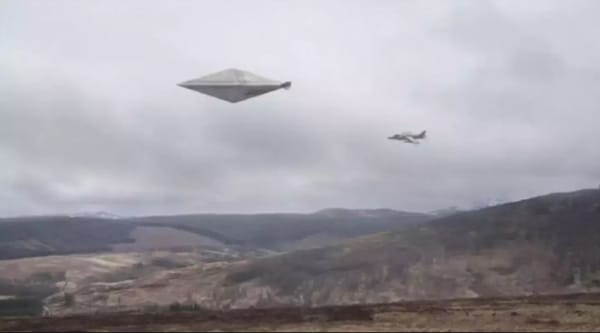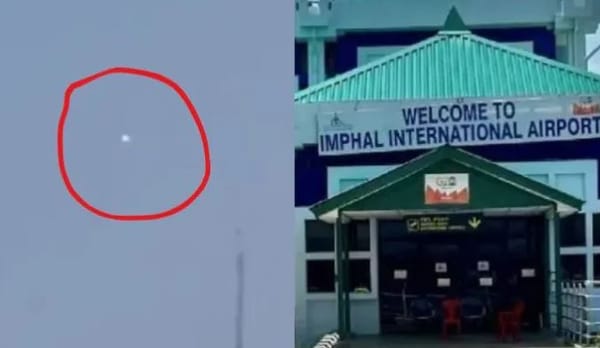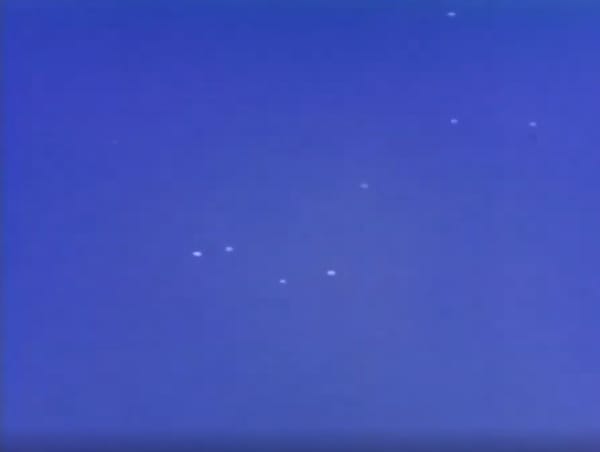The 1957 Levelland UFO Case

The Levelland UFO case, which unfolded over the night of November 2–3, 1957, in Levelland, Texas, stands as one of the most remarkable and well-documented incidents in the annals of UFO history. In a relatively short period, a diverse array of witnesses reported seeing strange, glowing objects in the sky, accompanied by mysterious phenomena affecting their vehicles. These reports ranged from truck engines failing to lights flickering and extinguishing, all coinciding with the presence of these unidentified objects.
The significance of the Levelland case extends beyond the eerie sightings themselves; it serves as a pivotal moment in the broader narrative of UFO investigations during the late 1950s. At a time when public interest in flying saucers was surging, the sheer volume of credible witnesses—15 individuals, including local law enforcement officers and ordinary citizens—added considerable weight to the claims. Such a large number of witnesses within a short timeframe not only amplified the public’s intrigue but also challenged skeptics to offer explanations that could account for the collective experiences.
The Levelland case continues to resonate in discussions about the validity of UFO sightings, the reliability of eyewitness testimony, and the ongoing struggle between proponents of extraterrestrial theories and those favoring scientific explanations. This incident serves as a compelling reminder of the complexities surrounding UFO phenomena and the persistent questions that remain unanswered in the realm of aerial anomalies.
Background
In 1957, Levelland, Texas, was a small but vibrant community located in the heart of the South Plains region. With a population of approximately 10,000, Levelland served as an agricultural hub, surrounded by vast stretches of flat prairie and farmland. The town, situated about 30 miles west of Lubbock, was characterized by its close-knit community, where residents often knew each other personally. The simplicity of life in Levelland, with its main streets lined with local businesses and agricultural activity, painted a picture of an average American town during the mid-20th century. This backdrop made the extraordinary reports of UFO sightings all the more striking, as residents of Levelland were generally skeptical of such phenomena.
The late 1950s marked a pivotal era in the history of UFO sightings in the United States. Following the end of World War II, a surge of interest in unidentified flying objects began, fueled by reports of strange aerial phenomena and an increasing fascination with space exploration. The term "flying saucer" entered the American lexicon in 1947, following a widely publicized sighting by pilot Kenneth Arnold, which sparked a national obsession with the idea of extraterrestrial visitors. By the late 1950s, sightings had become common, with the United States Air Force launching Project Blue Book in 1952 to systematically investigate UFO reports.
As Cold War tensions heightened, many Americans began to associate UFO sightings with national security concerns, fearing that unidentified objects might be advanced technology from foreign adversaries. The 1950s also saw an increase in science fiction literature and films, which contributed to public fascination with the possibility of alien life. As a result, UFO sightings were often sensationalized in the media, further entrenching them in popular culture.
Public perception of UFOs in the late 1950s was a complex tapestry of intrigue, skepticism, and fear. For many, UFOs represented the potential for contact with extraterrestrial life, stirring imaginations and sparking curiosity about the cosmos. This fascination was often accompanied by a sense of wonder and excitement, with sightings reported by everyday people becoming topics of conversation in local communities.
However, skepticism was also prevalent, particularly among scientists, government officials, and the media. Many viewed UFO reports as products of misidentification, mass hysteria, or hoaxes. The U.S. Air Force's official investigations aimed to provide rational explanations for sightings, often attributing them to natural phenomena, such as weather balloons or atmospheric conditions.
Despite the skepticism, the Levelland UFO case emerged during a period of heightened interest in aerial phenomena, capturing the attention of the public and the media alike. The sheer volume of credible witness accounts from Levelland further complicated the narrative, leading to ongoing debates about the nature of UFOs and the validity of eyewitness testimony. As the case gained traction, it illustrated the cultural divide between those who embraced the possibility of alien visitation and those who remained firmly rooted in scientific rationalism.
Reports
The Levelland UFO case began on the evening of November 2, 1957, when two immigrant farm workers, Pedro Saucedo and Joe Salaz, reported a startling encounter while driving four miles west of Levelland. They called the Levelland police department to share their experience, which involved a striking blue flash of light that illuminated the area around their truck. Saucedo recounted how their vehicle suddenly stalled, its engine dying without warning. As they looked out, they claimed to see a rocket-shaped object rise up and approach them. In a state of panic, Saucedo jumped out of the truck, hitting the ground in fear. He later described the event, stating, “The thing passed directly over my big truck with a great sound and rush of wind. It sounded like thunder, and my truck rocked from the flash… I felt a lot of heat.” Moments after the object moved away, their truck’s engine restarted and functioned normally.
Following this initial report, additional sightings poured in from various witnesses throughout the night. One of the most notable was from motorist Jim Wheeler, who encountered a brilliantly lit, egg-shaped object approximately 200 feet long while driving four miles east of Levelland. His vehicle abruptly stalled, and as he exited his car to investigate, the object took off, extinguishing its lights as it ascended. Miraculously, as the UFO vanished into the night, Wheeler's car engine roared back to life.
Several other witnesses corroborated the bizarre phenomenon. A married couple traveling northeast of Levelland experienced a similar event, reporting a bright flash that caused their headlights and radio to die for three seconds. Shortly thereafter, another witness, Jose Alvarez, encountered a strange object blocking the road 11 miles north of Levelland. His vehicle's engine also stalled until the object departed.
Newell Wright, a student at Texas Technological College, recounted his experience while driving ten miles east of Levelland. He noted that his car engine sputtered and lights flickered before completely shutting off, leaving him in darkness. Upon exiting his vehicle, Wright observed a “100-foot-long” egg-shaped object on the road. The object lifted off shortly thereafter, and his car's engine started functioning normally again. Frank Williams, a local farmer, reported a similar experience just after Wright, witnessing a brightly glowing object in the road that caused his vehicle's lights and motor to fail until it flew away.
As the night progressed, the Levelland police department received a total of 15 UFO-related reports. Officer A.J. Fowler, who was on duty at the time, noted that each caller was extremely excited about their sighting. The influx of reports prompted several police officers, including Sheriff Weir Clem, to investigate the claims firsthand.
Sheriff Clem himself reported seeing a brilliant red object moving across the sky at approximately 1:30 AM, confirming the validity of the witness accounts. At 1:45 AM, Levelland's Fire Chief, Ray Jones, also observed an unidentified object, which caused his vehicle's lights and engine to sputter. These observations from local law enforcement added credibility to the numerous reports and underscored the unusual nature of the events occurring that night.
The series of sightings in Levelland created a palpable sense of urgency and intrigue in the community, leading to discussions about the potential implications of such phenomena. The collective accounts from credible witnesses, including law enforcement officials, transformed the Levelland UFO case into a significant incident in the study of unidentified flying objects.
U.S. Air Force Investigation
In response to the growing number of UFO sightings across the United States, the U.S. Air Force established Project Blue Book in 1952. This program aimed to systematically investigate UFO reports and assess any potential threats to national security. Project Blue Book operated under the belief that many sightings could be explained by conventional aircraft, natural phenomena, or misidentifications. By the time of the Levelland incident in 1957, the project had gathered a significant amount of data and experience in analyzing various UFO claims.
Following the Levelland sightings, the Air Force dispatched an investigator to the area to conduct interviews and gather evidence. The investigation process included meeting with witnesses, collecting accounts, and reviewing the available information regarding local weather conditions at the time of the sightings. Despite the numerous eyewitness reports, the Air Force concluded that the events were likely the result of natural phenomena, specifically attributing the sightings to ball lightning or other electrical disturbances.
Key Findings and Conclusions Drawn by the Air Force
The key findings of the investigation led the Air Force to assert that the Levelland UFO sightings could be explained by a severe electrical storm that had occurred earlier in the evening. The investigators pointed to the absence of consistent descriptions of the object among witnesses, which they argued indicated a lack of reliability in the accounts. They suggested that the sightings could be attributed to ball lightning or St. Elmo's fire—both of which can produce luminous effects and are known to cause electrical disturbances that might affect vehicle engines.
Additionally, the Air Force's report noted that several witnesses had educational backgrounds that could raise questions about their reliability as observers. This included an assessment of Pedro Saucedo’s educational level, which the Air Force deemed insufficient to support his account. Ultimately, the Air Force dismissed the sightings as products of environmental conditions rather than evidence of extraterrestrial craft.
Criticism of the Investigation
Despite the Air Force's conclusions, many critics challenged the thoroughness of the investigation. Skeptics argued that the limited time spent by the Air Force investigator—only seven hours in Levelland—was insufficient to fully explore the variety of eyewitness accounts. Donald H. Menzel, a prominent astronomer and UFO skeptic, expressed concerns over the investigation's depth and the methodologies used to evaluate the evidence. Menzel stated that even with more extensive analysis, the case's details did not warrant the significance that some attributed to it.
Critics also pointed out that only three of the fifteen witnesses were interviewed by the Air Force, raising questions about the representativeness of the investigation's conclusions. The failure to account for all eyewitness reports left many unanswered questions, fueling speculation and dissatisfaction among both UFO proponents and skeptics alike.
In stark contrast to the Air Force's conclusions, several ufologists emerged to challenge the official explanations, notably James E. McDonald and J. Allen Hynek. McDonald, a physicist and respected UFO researcher, testified before a committee of the U.S. House of Representatives in 1968, emphasizing that the conditions for an electrical storm were not present in Levelland at the time of the sightings. He argued that the evidence clearly demonstrated that ten vehicles had stalled independently within a two-hour period, undermining the Air Force's claim of a natural phenomenon.
Hynek, who served as a scientific consultant to Project Blue Book, later expressed regret for hastily agreeing with the ball lightning explanation without considering the absence of actual storm conditions. He acknowledged that the reports from witnesses indicated overcast skies and mist, but no thunderstorms or lightning. Hynek highlighted the lack of evidence to support the idea that ball lightning could cause vehicle engines to stall or headlights to extinguish, stating that there was no known scientific precedent for such effects resulting from atmospheric phenomena.
Together, McDonald and Hynek's critiques underscored the ongoing tension between official explanations and the testimonies of eyewitnesses. Their insights contributed to a broader dialogue about the legitimacy of UFO sightings and the importance of rigorous investigation into unexplained aerial phenomena. As the Levelland case continued to capture public interest, it became a focal point for discussions about the credibility of both eyewitness accounts and scientific investigations into UFOs.
Media Coverage
The Levelland UFO case quickly gained national attention, with newspapers and radio stations reporting the remarkable series of sightings that unfolded over the night of November 2–3, 1957. Local news outlets in Texas initially covered the story, emphasizing the excitement and confusion among residents. As details emerged, larger newspapers and media organizations across the country picked up the narrative, framing it as a significant incident in the ongoing discourse about unidentified flying objects. Headlines highlighted the sheer number of witnesses, including police officers and local officials, lending credibility to the accounts and stoking public intrigue.
Prominent news stories featured quotes from eyewitnesses, descriptions of the unusual lights and objects reported, and commentary from skeptics and scientists. The sensational nature of the reports, coupled with the mystery surrounding the sightings, captured the imagination of the American public. The Levelland incident became a focal point in the broader discussion about UFOs, with its inclusion in various UFO-related books and documentaries reinforcing its status as a pivotal case.
Public Reaction to the Reports and Its Effects on UFO Culture
The public reaction to the Levelland UFO case was one of fascination mixed with skepticism. Many people were captivated by the idea that multiple credible witnesses had experienced something extraordinary. This incident contributed to a growing culture of UFO enthusiasts, with discussions about the possibility of extraterrestrial life becoming more mainstream. Public interest surged, leading to increased attendance at UFO conventions and a rise in the publication of books and articles focused on the phenomenon.
Conversely, skepticism also flourished, with some individuals and groups attempting to debunk the sightings as mere misinterpretations of natural phenomena. The Levelland case became a prime example in debates about the validity of UFO reports, as skeptics pointed to the Air Force's conclusions regarding ball lightning and electrical disturbances as definitive evidence against the existence of extraterrestrial craft.
The case also encouraged amateur UFO investigators and enthusiasts to conduct their own research, leading to a proliferation of local UFO sightings and reports. This culture of inquiry and exploration would ultimately contribute to the ongoing dialogue about unidentified aerial phenomena in America.
Influence on Subsequent UFO Sightings and Investigations in the U.S.
The Levelland UFO case had a lasting influence on both subsequent sightings and the investigative landscape surrounding UFO phenomena. The significant number of witnesses and the widespread media coverage heightened public awareness, encouraging more people to report their own sightings. This increased visibility of UFO phenomena helped to destigmatize the act of reporting such encounters, as individuals felt more empowered to share their experiences without fear of ridicule.
In addition, the Levelland case prompted further scrutiny of how UFO sightings were investigated by government agencies. The contrasting perspectives of skeptics and ufologists highlighted the need for more thorough and impartial investigations. In the years that followed, new UFO reports would often reference Levelland as a case study, emphasizing the importance of witness credibility and the potential for unexplained phenomena.
The incident also contributed to the ongoing evolution of Project Blue Book and similar investigative efforts, as pressure mounted for the Air Force and other agencies to adopt more rigorous standards in evaluating UFO reports. As public interest in UFOs continued to grow, the Levelland case remained a significant milestone in the history of UFO culture, shaping the narrative around unexplained aerial phenomena for decades to come.
Conclusion
The Levelland UFO case represents a pivotal moment in the history of unidentified flying object sightings, marked by a remarkable series of reports from multiple credible witnesses within a short timeframe. Occurring on the night of November 2–3, 1957, in Levelland, Texas, the incident captivated the public's imagination and drew the attention of the U.S. Air Force, which conducted an investigation through its Project Blue Book program. While the Air Force attributed the sightings to ball lightning and electrical phenomena, the sheer volume of witness accounts, including those from local law enforcement, left many questions unanswered and fueled a lasting fascination with the case.
The significance of the Levelland incident extends beyond the immediate reports; it highlights the complexities surrounding UFO phenomena, the nature of eyewitness testimony, and the struggle for credible investigations into unexplained events. As one of the most extensively documented cases of its time, it became a reference point for subsequent UFO sightings and investigations, influencing public perception and sparking deeper inquiries into the nature of aerial anomalies.
The ongoing debate between skeptics and believers continues to be informed by cases like Levelland. Skeptics argue for scientific explanations rooted in natural phenomena, while believers maintain that such incidents provide compelling evidence of extraterrestrial life. This dichotomy underscores a broader societal struggle to reconcile the known with the unknown, pushing the boundaries of scientific inquiry and human imagination. As interest in UFOs persists, the Levelland case serves as a powerful reminder of the enduring mystery that surrounds our understanding of the universe and our place within it.



